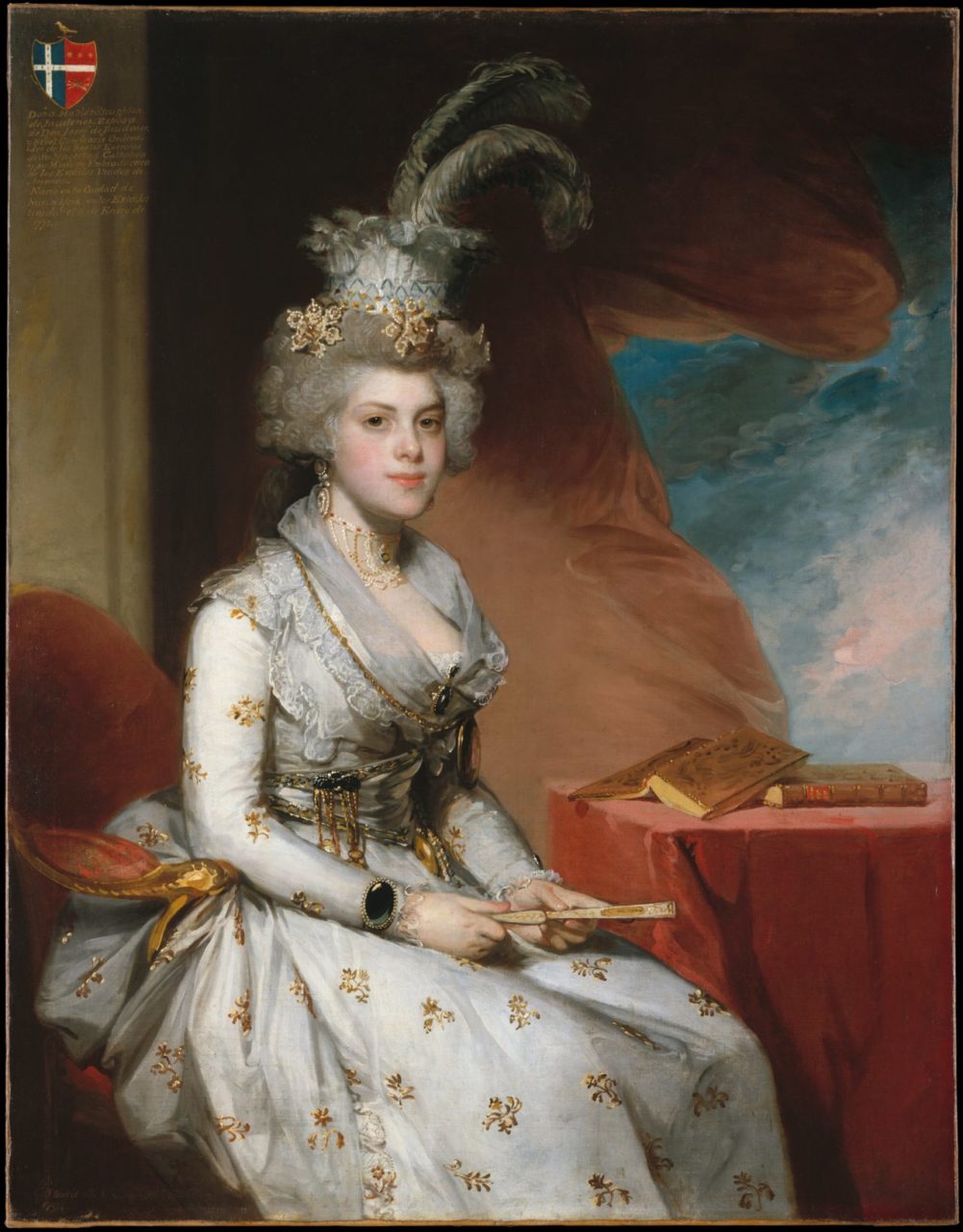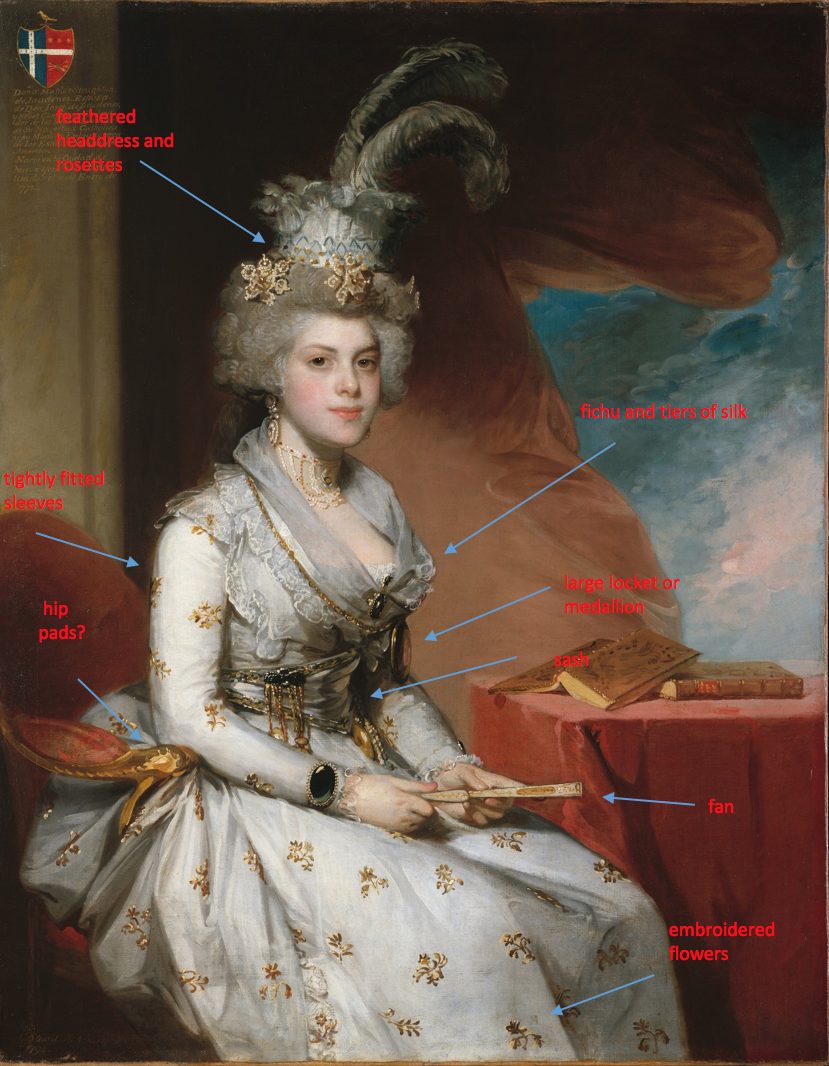[INSERT 1-SENTENCE ABSTRACT OF YOUR CONCLUSIONS HERE. WRITE AFTER YOU HAVE COMPLETED YOUR ANALYSIS].
About the Portrait
Keep this large capital letter at the start of your analysis. Questions to consider:
The artist
- Who is the artist?
- Age? Nationality?
- Part of what artistic movement?
- At what point in his/her career did he/she paint this portrait?
I recommend searching Oxford Art Online for this biographical information.
The sitter
- Who is the sitter?
- Age? Nationality?
- Occupation? Family?
- Did they commission the portrait?
- Do we know anything about the painting process?
- Are there sketches or related works?
- Are there other portraits or photographs of this sitter?
The museum’s entry on your artwork is a good place to start.
The reception (if known)
- Was this work exhibited publicly shortly after it was created?
- If so, how was it received?
- Did this portrait affect the artist’s career?
Possible Comparison images for “About the Portrait” include:
- Any other portraits of the same sitter by this artist or a different artist?
- Or a similar portrait of a different sitter by the same artist?
- Or of the sitter’s spouse/relative?
- A photo of the sitter?
- Any related sketches?
- Or an image of the artist?
Gilbert Stuart (American, 1755–1828). Matilda Stoughton de Jaudenes, 1794. Oil on canvas; 128.6 x 100.3 cm (50 5/8 x 39 1/2 in). New York: Metropolitan Museum of Art, 1907.07.76. Rogers Fund. Source: The Met

About the Fashion
K eep this large capital letter, replacing it with the relevant letter when you’ve written your analysis.
SOME QUESTIONS TO CONSIDER… You don’t have to answer them all!
The dress
- Identify the costume shown, beginning with the main garments.
- Try to identify the materials the garments were probably made out of.
- Use correct terminology for dress parts.
The accessories
- Identify the accessories shown and their materials.
- Are there parts of the outfit that we can’t see, but were likely worn (underwear, shoes, etc.)?
The sources
- How was this costume likely made and acquired?
- Could any of it have been made by machine?
- Could any of the garments and accessories be purchased ready-made at this date?
- If we know the designer, give a brief introduction to him/her as you did for the artist above.
The setting & context
- Establish the social setting and context of your portrait.
- How formal is the costume shown in the portrait?
- What time of day (morning, afternoon or evening), place (court, city or country), specific activity (e.g., riding, travelling, walking, shopping, visiting, dancing, etc.) is the costume appropriate for?
- Does the costume reflect special circumstances, such as mourning or wedding costume?
- What does this individual’s costume tell you about his/her place in society?
The ideal
- What is the ideal of the body and of physical beauty at this date?
- How well does the person in your portrait measure up to the ideal?
- Compare the portrait to at least two other portraits in museum collections and/or to period fashion plates and/or the illustrations in our textbook and other fashion histories.
The fashion
- Try to find surviving examples of similar garments and accessories in museum collections.
- Illustrate and cite what you find by giving the object’s name, materials and museum location, including the accession number.
- How fashionable is the individual in your portrait?
- Is his or her appearance in advance of fashion, right in step with it, or conservative or old-fashioned?
- Is the costume an example of anti-fashion or non-fashion?
- Does it relate to contemporary trends in art and design (e.g. Baroque, Rococo, Neo-Classicism, Renaissance Revival, Rococo Revival, the Aesthetic Movement, Art Nouveau, etc.)?
- What does this individual’s costume reveal about his/her personal style?
Possible Comparison images for “About the Fashion” include:
- Fashion plate showing a similar costume
- Advertisement showing a similar costume
- Fashion photograph showing a similar costume
- Published caricature or sketch of similar costume
- Another contemporaneous artwork showing a similar costume
- A surviving garment similar to that seen in your portrait
- Similar accessories from the same period
Its Legacy
Keep this large capital…
In this section, discuss:
- Has this work had an influence on later artists?
- Has it inspired modern/contemporary designers?
- Does it appear at all in popular culture?
- Any later impact or influence…
Possible Comparison images for “Its Legacy” include:
- Other artworks it inspired
- Work by modern/contemporary designers
- Any relevant pop culture references
References:
- INSERT YOUR BIBLIOGRAPHY FROM ZOTERO HERE as a bulleted list.
- CHICAGO-STYLE: 16TH EDITION, FULL NOTE.
- ALPHABETICAL BY LAST NAME/TITLE, IF YOU’RE ADDING ANY SOURCES NOT FROM ZOTERO.
- Be sure to include:
- Museum website link for your artwork
- Oxford Art Online entry on your artist
- AT LEAST 3 book sources
- Other credible sources (like those linked from the Timeline’s Century Overview pages)







